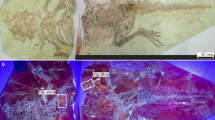Abstract
Actinia equina is a variably coloured sea anemone that broods juveniles within its body cavity. Male, female and non-sexual individuals can produce juveniles, even after periods of isolation, and it has been suggested that this species is capable of reproducing by asexual or parthenogenetic means. Further evidence in favour of this hypothesis has been derived from similarities in coloration and in enzyme banding, as shown by electrophoresis, between offspring and their parents1–3. A. equina does, however, produce gametes that are morphologically similar to those of other sexually reproducing anemones, which suggests that sexual reproduction must also occur1–4. Thus far the only direct evidence of sexual reproduction has been the occurrence of adults containing differently coloured juveniles within their body cavity; however, this is unusual and indeed in some areas adults only contain juveniles of the same colour as themselves1,2,5,6. Carter and Throp1 have suggested that adults can select against sexually produced juveniles that are phenotypically different from themselves; as a result juveniles generally match their parents in coloration. We show here by means of fostering experiments that adults will brood allogenic juveniles. Surprisingly, juveniles may change colour to match that of their foster parent.
This is a preview of subscription content, access via your institution
Access options
Subscribe to this journal
Receive 51 print issues and online access
$199.00 per year
only $3.90 per issue
Buy this article
- Purchase on Springer Link
- Instant access to full article PDF
Prices may be subject to local taxes which are calculated during checkout
Similar content being viewed by others
References
Carter, M. A. & Thorp, C. H. J. mar. biol. Ass. U.K. 59, 989–1001 (1979).
Gashout, S. E. & Ormond, R. F. G. J. mar. biol. Ass. U.K. 59, 975–987 (1979).
Carter, M. A. & Thorpe, J. P. J. mar. biol. Ass. U.K. 61, 79–94 (1981).
Larkman, A. U. & Carter, M. A. J. mar. biol. Ass. U.K. 60, 193–204 (1980).
Cain, A. J. Nature 247, 289–290 (1974).
Rostron, M. A. & Rostron, J. J. exp. mar. Biol. Ecol. 33, 251–259 (1978).
Author information
Authors and Affiliations
Rights and permissions
About this article
Cite this article
Lubbock, R., Allbut, C. The sea anemone Actinia equina tolerates allogeneic juveniles but alters their phenotype. Nature 293, 474–475 (1981). https://doi.org/10.1038/293474a0
Received:
Accepted:
Issue Date:
DOI: https://doi.org/10.1038/293474a0
This article is cited by
Comments
By submitting a comment you agree to abide by our Terms and Community Guidelines. If you find something abusive or that does not comply with our terms or guidelines please flag it as inappropriate.



